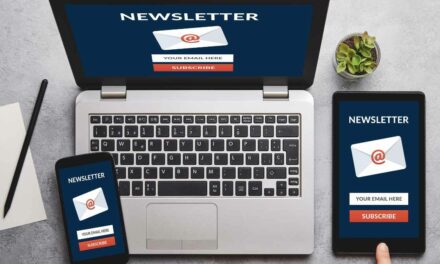Many marketers view a “drive to web” campaign as simply moving an audience to a landing page in order to garner sales, signups, or other actions. The campaign launches, the desired actions are tabulated, and the marketing team moves on to the next campaign. This approach is outdated and doesn’t leverage the latest technology, tools, and marketing software that can help build more personalized and dynamic campaigns. There’s vast room for improvement in drive-to-web campaigns through analytics and optimization.
Looking at the Broader Experience
Upper-tier advertising and marketing agencies are looking beyond only campaign analytics, and considering the entire user experience and engagement. They’re shifting their focus because a positive experience is the way to attract and retain site visitors and the only way to encourage them to take action. Such experiences are generated by matching the offered content to consumers’ actual behaviors
In order to improve drive-to-web results, brands should develop content based on customer behaviors, and adjust it for every channel, from social media to OTT or linear TV. These brands must be more creative in how they adjust based on consumers’ consumption habits and then develop more refined consumer segments. So fundamentally they can offer the ideal content to the most receptive and relevant audience. And an advanced advertising firm can optimize this content dynamically to further improve the metrics of the drive-to-web campaigns.
Implementing the Right Tech
In order to improve the customer experience through content/segmentation/optimization, companies need to have in place the right tech tools. It’s essential to match first and third-party data, in the context of knowing what the visitor is doing on the site in real time and the actions they took before reaching the site. Correlating these two data sets allows for personalization as brands can develop a deeper understanding of the individual. Integrating together multiple data sets requires Big Data analytics and a keen sense of knowing which data carries the most “weight” in terms of how it will impact the customer experience and overall results.
The website offers a wealth of information that can be pulled together under a thoughtful and precise strategy. The basis of collecting this data is to use pixel tracking that monitors the exact options of visitors, from clicks to “hovers.” Marketers and advanced agencies can use more than 1,000 distinct pixel trackers that allow them to create customer “personas” where they are grouped together based on common behavioral metrics. A good starting point is a UX tracking pixel which measures the experience of a visitor and allows a brand to make changes to site navigation and the purchase process. Third-party data comes in with the use of provider pixels that can show marketers the actions of visitors’ web habits before they reach the brand. Another layer of data for the big data analytics platform is social media engagement tracking, which allows companies to for example correlate social media affinity or actions with certain products.
Moving into Optimization
The end result of this layering of first and third-party data is real-time segmentation and improved targeting that allows brands to present the right content to the right visitors while making incremental improvements to the site.
Over time, the marketing firm that adopts these methods and collects a trove of data can then create adaptive content that perfectly aligns customer behaviors with certain attributes. This personalization extends to both individuals and their preferred viewing device, whether it’s TV, mobile, or tablet. This is the pinnacle of personalization for the drive-to-web community, but getting to this place takes a strategic approach and the right tech tools.
Here are some best practices for brands that want to create the optimal drive-to-web campaigns that are informed by data and customer experiences:
- Deeply understand the product so the messaging for the product can take consumers from awareness to desired action.
- Cater messages to the preferred content viewing devices. Use your analytics to segment visitors based on device and then adjust the content to custom fit.
- Change media planning based on customer behaviors. Understand how your specific industry also shapes the media mix.
The Broader Website Shift
By gathering 1,000 or more pixel-tracked data points and actual customer behaviors, brands have access to a new type of site “intelligence.” This data is enabling a different kind of website, one that evolved from landing pages and portals and moved beyond “Web 2.0”. The mobile site is now the primary content delivery platform and brands have the ability to dynamically adjust content to specific visitors. The site isn’t just an order-taking ecommerce tool, but it is also a source of invaluable analytics and insights which can be used to segment and delight customers. It’s the new way to conduct drive-to-web, one that’s light years ahead of the older “blanket approach” of reaching all possible customers with the same messaging through the same channel.
Brands and agencies that want to transform their drive-to-web campaigns should embrace this new style of site, where intelligence can be leveraged to guide behaviors.






